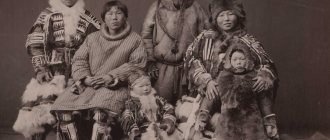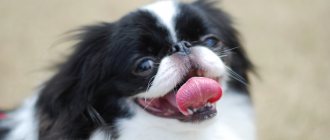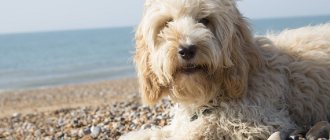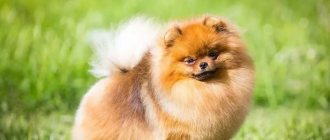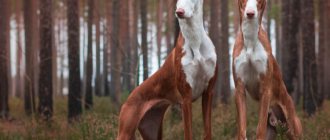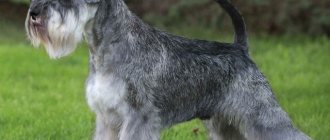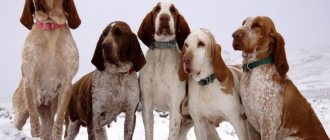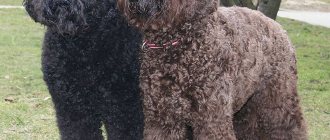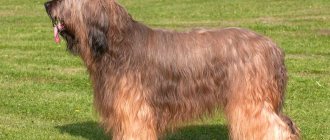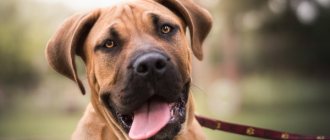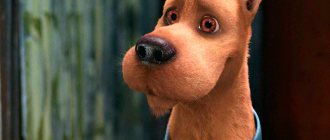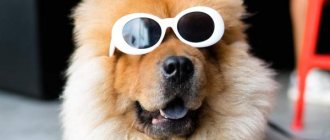Tazis are an incredible, small breed of greyhound dogs bred in ancient times. Today, the breed is on the verge of extinction, despite the efforts being made to restore it. True greyhound fans value Tazy for his enthusiasm, tirelessness, loyalty and companionable nature.
Note! Tazy is a dog from the breed group of Saluki, Central Asian, Kazakh and Turkmen greyhounds. For the world community, there are no differences between these dogs.
Historical reference
The history of the breed goes back to ancient times. Remains and drawings of greyhounds (Taza's ancestors) have been discovered in the tombs of Ancient Egypt. According to experts, greyhounds lived in Egypt in the 1st–2nd centuries BC.
It is very interesting that modern dogs are very picky about their diet... and there are reasons for this. In 2014, a DNA study was conducted on the greyhound breed group. Scientists have found that the greyhound's body is capable of digesting a large amount of starch, most likely a consequence of the poor nutrition of its ancestors. Further study of the issue confirmed the guesses - Taza’s ancestors ate waste in rural yards, that is, they almost did not eat clean meat.
Despite their centuries-old history and status as a national treasure in their homeland, by the beginning of 2010 the Taz were on the brink of extinction. In 2014, enthusiasts held a show in which purebred Tazy was shown. The event was held with the aim of attracting the attention of cynological unions and it must be said that the plan was a success. Many experts and greyhound enthusiasts supported the initiative of Taza’s fans. At the end of the event, inspiring speeches were made, kennel clubs even received financial motivation...however, significant results have not yet been observed.
Traditional nicknames
Since ancient times, a dog of a given breed has been given a nickname based on its inherent character and quality. The chosen nickname emphasized her character and dignity.
Suitable names for a male dog include:
- Diamond.
- Boast.
- Golden eagle.
- Throw.
- Buran.
- Wind.
- Thunder.
- Expensive.
- Covenant.
- Merlin.
- Flyer.
- We love you.
- Swipe.
- We will win.
- Flutter.
- Blaze.
- Glorious.
- Falcon.
- Daring.
- Hawk.
- Scimitar.
For bitches:
- Wave.
- Snowstorm.
- Storm.
- Divna.
- Erza.
- Snake.
- Comet.
- Okay.
- Winch.
- Milka.
- Dream.
- Nagla.
- Naida.
- Nega.
- Courage.
- Saiga.
- Arrow.
- Chara.
- Yula.
Appearance
dog breed is not recognized by the Fédération Cynologique Internationale (FCI) and is currently on the verge of extinction. Despite the efforts of breeders, the breed still remains small. To restore and standardize the livestock, it was decided to rely on the latest breed standard, approved in 1995.
As mentioned above, there are essentially no differences between the Tazy, Saluki and Persian Greyhound breeds. This is one breed group that was “customized” to the general standard and working requirements. Tazi is a breed with a lean build, which is usually divided into two types.
Kazakh or high:
- Height at the withers of males: 60–70 cm.
- Height at the withers of females: 55–65 cm.
Turkmen or medium high:
- Height at the withers of males: 55–65 cm.
- Height at the withers of females: 53–60 cm.
Important! Lack of minimum height or elongation in mature, mature dogs is considered a serious fault. If the dog is above the maximum height mark, this is a disqualifying fault!
Regardless of the gender and type of dog, the body structure should be elongated . The elongation index (the ratio of the length of the body to the height at the withers) of males is 100–103. Bitches may have a longer build because puppies must have easy access to the nipples.
Against the background of a well-developed, strong skeleton, the muscles of the Tazy should be dry and lean. The skin is elastic, tight-fitting, without folds or signs of dampness. The overall impression is that the dog should look very strong, but not heavy.
Breed standard
- The head is long, wedge-shaped, pointed, expanding towards the skull. The skin on the head fits tightly, does not form folds, the muscles are developed, but dry. Any, even slight, dampness or roughness of the head is considered a disqualifying fault. Expressive cheekbones are considered a flaw. The skull is not too wide, almost flat, the back of the head is moderately pronounced. The brow ridges are wide, strong, but weakly expressed. The transition from the cranial part to the facial part is very smooth, weakly expressed, almost straight. A sharp drop in line in the transition from the forehead to the muzzle is considered a fault. The facial part is longer than the skull, the lower part is moderately sloping, the bridge of the nose is smooth (without a hump) and dry, tapering towards the nose.
- Teeth are complete and in correct bite. Any violation of the dental formula or bite is considered a defect. In rare cases, teeth removed for medical reasons are not taken into account (in dogs over 5 years old). The lips are thin, one might say dry, tightly fitting, completely hiding the dentition. Sagging lips are considered a serious fault.
- The nose is small, mobile and sensitive. Black pigmentation preferred. With pronounced light colors, a brown nose is allowed. Light pigmentation or pink color of the nose is unacceptable.
- The eyes are large, almond-shaped or oval in shape is preferred. The eyes should not be sunken or protruding. Eye pigmentation is rich, brown; lightened color is considered a flaw or defect. The eyelids are thin, tight-fitting, pigmented to match the nose (black or brown).
- The ears are thin, lowered to the head, barely raised on the cartilage. Strong elevation of the ears at the base is considered a fault. The ears are long, close to the head, set in line with the outer corners of the eyes or slightly higher. Short ears are a serious fault. In an adult dog, the ears extended forward (excluding hair) should reach the fold of the lips. Adult dogs must have long, decorative hair on their ears.
- The body is rectangular, harmoniously elongated, dry in format. The neck is oval, with dry muscles and a pronounced scruff. Loose muscles are considered a serious disadvantage. The length of the neck should be equal to the length of the head from the back of the head to the nose. A shortened neck is considered a fault, while a length exceeding the norm is acceptable in a harmonious posture. Standing tall and proud. The withers are strong, despite the lean muscles, well defined in both males and females. The chest is wide and spacious, almost round. The depth of the chest is standard - up to the elbows. A narrow, weak or insufficiently deep sternum is considered a fault. An open and loose chest is a vice for Taza (and all greyhounds). The back is quite long, exceptionally level and strong, wide, well muscled, and a slight slope is allowed. The loin is well raised above the level of the back, straight with pronounced muscles. A weak and arched back is a serious fault. An upwardly arched back (hunchback) is a disqualifying fault. The croup is strong, wide, sloping and not too long. The heads of the hip joint are well defined and widely spaced (in adult, mature dogs, the distance between the heads of the croup reaches 7–8 cm). The groin line is dry, tucked, with a sharp undercut.
- The limbs are smooth, parallel, with lean muscles and strong joints. When viewed from the front, the front paws are parallel, even, oval, and dry. The elbows are directed strictly back and almost do not touch the chest when moving. Turned or tucked elbows are a vice for Taza. The forearms are strong, set at an angle of up to 100 degrees. The pasterns are elongated, set with a slight slope. Weak pasterns and sagging pasterns are considered faults. The hands of the front paws point straight forward; the size of the paws is considered a fault. The hind legs are parallel, set wider than the front legs. The muscles are dry, the angles of the joints are natural and pronounced. The hock joints are flexible and strong, pointing straight back. The hocks are elongated, set strictly vertically to the support. Sagging metatarsals, like turned out hocks, are a fault. Oval, collected in lumps. Round hands and loose fingers and weak hands are a vice. The hind legs are slightly longer than the front legs. Small brushes are considered a disadvantage.
- The tail is thin, long, wide at the base, neatly rounded at the end. A thick tail along its entire length is considered a fault. At rest, the tail is calmly lowered, curved like a saber, the end of the tail is wrapped in a ring or a well-defined hook. hook. The tail ring does not straighten due to fusion of the vertebrae. The full length of the tail reaches the hock joints, the tail ring is 1–2 cm above the hock joint. A tail that is longer or shorter than normal is a serious fault. When working, the dog holds the tail at the level of the back or slightly higher.
Vaccinations for Kazakh greyhounds
Vaccination is carried out against the following diseases:
- canine distemper or distemper;
- parvovirus enteritis - the causative agent is parvovirus;
- infectious hepatitis - causative agent hepadnavirus;
- parainfluenza;
- rabies;
- leptospirosis;
- coronavirus;
- trichophytosis.
- At 2 months the first vaccination is carried out. After the injection, the puppy should not be washed, overfed or taken outside. Immunity after the first vaccine is developed within 12 days; this period becomes the most dangerous for the baby. A person needs to make a lot of effort to alleviate the puppy’s condition. After the first vaccination, puppies experience increased body temperature, general weakness and diarrhea.
- After 3 weeks, the puppy is given a second vaccination, but with the same vaccine. As a rule, after the second vaccination the dog feels much better, but for 12 days it must be protected from other animals, from drafts and not taken out for walks. After this time, walks are allowed.
- At 6 months of age, the puppy is vaccinated against rabies and a complex vaccine against several diseases. It is forbidden to vaccinate if the dog's teeth are changing. You need to wait until all the teeth are replaced, and then vaccinate the baby.
- At one year of age, the dog is given a comprehensive vaccine.
- Further, once a year the dog should be vaccinated with the same complex vaccine.
Only a qualified specialist should vaccinate a puppy.
Before vaccination, he must examine the dog, measure its body temperature, and only if everything is normal, give the injection. The vaccine is placed either in the scruff of the neck or in the hip of the dog. The entire list of vaccinations administered by the veterinarian must be recorded in the dog’s passport. It also indicates the date of vaccination; subsequently, the owner himself will know the expected date of the next vaccination.
Character and training
The character of modern Tazy is not very different from the breed group. are considered to be more reserved, however they often run away and are disobedient . Four-legged animals are distrustful of strangers, they love the owner, and they are tolerant of other family members.
Due to their self-sufficiency and tendency to make independent decisions, Taz are considered a difficult breed to train. Successful owners recommend using a soft and motivational approach, because despite their determination, Tazy have a subtle mental organization.
Important! Tazy dogs do not tolerate separation from their owner well, they can become very sad and become depressed.
Before training, the pet needs to be tired, and this is a very difficult task. Representatives of the breed are good at fetching, so the easiest way to exhaust the dog is by giving it a ball or letting it run around with its relatives. It is important not to miss the moment of socialization, because despite its cute appearance, an angry representative of the breed is dangerous for surrounding animals and people.
Important! Tazy tend to play catch-up; the object of the dog's attention can be either a cat or a cyclist. Do not let your pet off the leash in unfamiliar areas!
Afghan hound cost - price of puppies
- Afghan hound puppies, costing from 2000 rubles, are essentially of unknown origin. Such cheap Afghans often lack not only a birth certificate, but also a veterinary passport, so all vaccination will fall on the shoulders of the new owners.
- In registered nurseries, puppies of this breed rarely cost less than 10,000 rubles.
- Dogs for breeding or for participation in exhibitions cost from 17,000 rubles.
When purchasing an Afghan hound from a kennel, new owners will receive a healthy puppy with a full package of documents, advice on maintenance and care, and many kennels provide their clients with discounts on professional food and assistance with transportation (delivery).
Hunting
Tazis constantly competed for a place in the sun with related breeds. The Greyhound has always been considered the fastest breed of greyhound over short distances, but Taz and Saluki are more durable and can maintain speed over longer distances.
This is interesting! Tazy's speed record (68.8 km/h) is registered in the Guinness Book of Records.
The special physique of dogs allows them to maintain endurance and absorb vibration from the impacts of their paws on the ground. Since the times of nomadism, Tazis were used for independent hunting - the dog caught up with prey, killed it and brought it to the owner. It is known that Tazy hunt well both alone and in a pack. At a time when firearms were a luxury, dogs were guided to the prey with the help of specially trained hunting birds.
Tazy dog - description
Tazy is a dog breed that is considered one of the oldest. The ancestor is currently called the Persian greyhound - Saluki.
The name of the breed is translated from Persian as “swift, fast.” The dogs led a nomadic lifestyle. For a long time, the Tazy was considered the only hunting breed.
The dog was treated with honor and respect, as it was the breadwinner in the family.
A separate place in the house was allocated for her, she received the best food, and she was considered the pride of the family. To protect against frost and the hot sun, the pet was given a special blanket decorated with beads. Important! To avoid fatigue, during long hikes, the dog was placed on a horse next to the owner.
The cost of a purebred puppy exceeded the price of a slave; one purebred dog replaced the bride price and amounted to about 40 horses. Until recently, the Tazy dog was popular in Turkmenistan, Kazakhstan and Uzbekistan, but today the breed is on the verge of extinction.
Maintenance and care
Tazy is a dog for a country house; keeping it in an apartment or confined space is absolutely unacceptable. Four-legged animals require long-term, daily exercise and intensive training. It is not safe to let your dog off the leash within the city limits, as there are too many irritating factors.
From early childhood, Tazy needs a strictly balanced diet. Puppies quite often suffer from food allergies and lactose intolerance, so most owners prefer to keep their pets on high-quality industrial food.
In general, caring for a dog is not burdensome. The coat must be combed and brushed once a week. Seasonal shedding occurs quickly, since dogs do not have undercoat and tangles do not form. Frequent bathing is unacceptable and can lead to skin diseases. Particular attention should be paid to the health of the ears and teeth. All greyhounds are prone to otitis media, especially in high humidity conditions.
Behavior
Tazy is an extraordinary breed; its behavior depends on its habitat and environment. The dog can live both in apartment and outdoor conditions. But under no circumstances should such a breed be chained. Keeping in a booth or luxury enclosure is allowed, but with mandatory walking 2-3 times a day.
In the apartment, the dog feels imposing, portraying a motionless statue that always watches over the household. Central Asian greyhounds are loyal four-legged dogs, they get along well with children and will never hurt them. They behave warily with strangers, they will never be the first to approach them, and they will only show aggression in moments of danger.
The Asian Greyhound is a fast, hunting breed. It is necessary to instill hunting skills from a young age. But since the breed is willful and difficult to train, it is better to give it to a professional dog handler.
Important! Greyhounds should not be kept with small pets, as the dog may view its neighbors as prey.
Dogs feel better when kept outside
Health
Taza's average life expectancy is 13–14 years. Representatives of the breed need high-quality care, regular exercise and adequate feeding. Tazy rarely survive to old age in urban conditions. These dogs often run away and run very fast, which often leads to death under the wheels of vehicles . The second most “popular” cause of death for Taza is heart disease... and only in third place is old age. Almost all ailments characteristic of Taza develop due to poor quality care. In rare cases, representatives of the breed are found to have diseases transmitted from their parents.
Common breed ailments include:
- Heart failure, congenital defects of the heart muscle and other pathologies of the cardiovascular system.
- Anemia.
- Thrombocytopenia.
- Food and atypical allergies.
- Dermatitis, pyoderma.
- Alopecia.
- Oncological diseases (most often lymphoma).
Basins should not be walked immediately after feeding. Representatives of the breed are prone to intestinal volvulus, which can lead to the death of the dog! During volvulus, the intestinal loop is deprived of blood supply and nutrition, which leads to rapid tissue death and the development of sepsis.
Clothes for the Afghan Hound
Clothing will not only help preserve its health, but will also give the dog the opportunity to fully enjoy the walk.
And any owner will be pleased to lead a dog on a leash, which many people pay attention to. The main thing when choosing clothes is to remember to choose not only beautiful and warm models, but also the most comfortable ones.
A jumpsuit for an Afghan hound will protect you from slush and rain, because the coat of this dog requires constant and careful care.
Buying clothes for a greyhound is now easy. Many stores selling clothing for animals have in their assortment stylish and beautiful things for dogs of all breeds.
Photo
Choosing a puppy
Podenco Ibicencos are few and far between and not very popular; it is quite difficult to purchase a puppy. Breeding is carried out by specialized nurseries, which already exist in Russia. You only need to buy an animal there. The responsible breeder is obliged to provide the necessary documents (puppy card, parental pedigrees, veterinary book with notes on vaccinations, etc.).
Buying Podenco Ibicenco puppies is not easy
A characteristic feature of Ibizan greyhound puppies is the amber color of the iris of the eyes and large, well-erect ears. If there are any doubts about the purebred puppy, it is better to seek the help of an experienced dog handler.
Price of a puppy of this breed
The cost of small Ibiza greyhounds starts from 30 thousand rubles. Puppies sold abroad (Europe, America) are estimated at 800–1500 euros.
Afterword
Tazy are obedient, excellent hunters, excellent guards and defenders. The breed is small in number and is in danger of extinction, so in Kazakhstan it is listed in the Red Book. A hunting greyhound is essentially a loaded gun that doesn’t need to be carried, that runs fast and also communicates with you. The laziest owners train their “walking gun” to carry the beast.
But nothing can compare with that excitement, that adrenaline in the hunter’s blood when his greyhound chases a hare, and that cunning man shakes it with his runs and jumps. And she overtakes the prey, no blood, only the dog’s strong teeth know what they’re doing. Hunting with a greyhound is also environmentally friendly, because the next generation of hares should be born from those who left the dog, which means it should be faster and more cunning. Our ancestors, organizing greyhound hunts, knew that this entertainment was incomparable in beauty and excitement to the tedious standing at the number while getting meat.
Tazy is a greyhound, she has excellent sense of smell and does not hesitate to rush through an island of bushes and thickets.
It is very gratifying that more and more amateurs are appearing without gun hunting and simply people who appreciate Tazy greyhounds as companions and hunters. These are men who consider themselves seasoned hunters and women who are born with a love of beauty, communication with nature, and pride in their playful and swift dogs. What kind of beauty is walking next to you? Basins - I answer. Although I am a little offended that the compliments are not intended for me.
Notes
- ↑ 1 2 3 Plakhov K.N., Plakhova A.S.
Preservation, restoration of the Kazakh Tazy breed and the formation of its modern appearance // Modern problems of environmental management, game management and fur farming: journal. - 2012. - Issue. 1. - pp. 318-320. (CC-BY) - ↑ 1 2 3 4 5 Glikina E.
Breeds of greyhounds of the former USSR // Greyhounds. - Litres, 2015. - ISBN 5457674126. - ↑ 1 2 Balgin R.
Tazy in the Alma-Ata region of Kazakhstan. Part I. // Bulletin of the International Society for the Conservation of Primitive Aboriginal Dog Breeds. - June 2011. - No. 27. - P. 18-25. - ↑ 1 2 3 4 Balgin R.
Tazy in the Alma-Ata region of Kazakhstan. Part II. // Bulletin of the International Society for the Conservation of Primitive Aboriginal Dog Breeds. - February 2012. - No. 30. - P. 55-79. - ↑ 123
I came to you with a tobet. Vremya: Socio-political newspaper of Kazakhstan (October 27, 2009). Retrieved August 5, 2015. - ↑ Derevyanko A.P., Pelikh I.G., Gemuev I.N., Oktyabrskaya I.V.
Peoples of Siberia: history and culture. - Institute of Archeology and Ethnography, Siberian Branch of the Russian Academy of Sciences, 1997. - ISBN 5780300194. - ↑ 1 2 3 Plyaskina N.
Every hunter wants basins. Vremya: Socio-political newspaper of Kazakhstan (May 8, 2014). Retrieved August 5, 2015. - ↑ 1 2 Shereshevsky E.I.
Description of greyhound dog breeds: Central Asian greyhound Tazy // Greyhounds and hunting with them. - M.: Publishing house M-va s. X. and blanks of the USSR, 1953. - 75 p.
Preface
The wonderful and exciting hunts with horses and greyhounds have gone into oblivion. The words have become unfamiliar to modern people: driver, helmsman, stirrup, etc. The revolution declared greyhounds to be a non-proletarian dog, and the main stock was simply shot. At the same time, hunting with greyhounds was also banned.
To this day, hunting farms have retained this connotation for aristocratic dogs. For example, hunting with greyhounds is limited in terms of time in relation to huskies and other breeds. All this causes great damage in the popularization of the breed and in maintaining the breeding pack in working order. Russian canines, Hortas and greyhounds are the pride of domestic dog breeding, our traditions, and something that a person living in the post-Soviet space should be proud of. But the taste of excitement, the sporting interest of hunting with greyhounds has been lost.
Probably our economically difficult times have pushed people to hunt for meat, and therefore dogs such as huskies are becoming more and more popular and in great demand. Laikas are excellent hunters and are convenient because you don’t have to think about them until the next hunt. This won't work with a greyhound. You need to communicate with her, look into her intelligent eyes, talk to her. People who appreciate beauty, the excitement of hunting, and who need the companionship of a friend will, of course, get themselves a couple of greyhounds
It doesn’t matter if they are Russian dogs, Hortys, Salukis or Tazy. These are aristocratic dogs and communicating with them gives almost the same pleasure as communicating with a beautiful woman endowed with the features of a noble man.
There is all the intelligence, beauty, pride, intrigue, mystery and something else that cannot be forgotten when communicating with these dogs.
Central Asian greyhounds have appeared on the territory of Belarus for several years now and have proven themselves excellent. In their ancient homeland, both bais and the poor were engaged in hunting with tazy. And this hunt, for the most part, was not entertainment, but a trade. The commercial use of the basin dictated the requirements for its versatility. The dog had to have the agility, maneuverability and good eyesight of a greyhound, the ability to use scent, find an animal, and the endurance of a hound. All these qualities were developed by the tazy and were consolidated for many centuries. They determine the effectiveness of hunting with a basin, its harvestability and versatility. “Tazi” - in Kazakh means clean, the dog does not have a specific smell. And like any very ancient breed of dog, it has its own beautiful legend about its origin.
Origin story
The Tazy dog breed was developed many centuries ago. The “breeders” who gave these greyhounds to the world are considered to be the tribes of Turkmen nomads who lived in Central Asia. These people treated with special trepidation not only their Akhal-Teke horses, on which they moved through the deserts, but also the dogs that remained after the Arab raid in the 8th century. Thanks to many years of painstaking work on proper education, as well as crossing greyhounds, they managed to develop a new species, which, judging by the reviews of the owners, tolerated the difficult climate of the Asian steppes without any problems. These animals could work all day long, completely oblivious to the hot sand and lack of moisture.
Turkmen hunting dogs have proven themselves well, which has influenced the growth of their population. Years later, Kazakh basins appeared. The formation of the main differences between the two groups of dogs that belong to the same breed was influenced by climatic and geographical conditions. Turkmen Tazy, despite living in arid deserts, always received high-quality individual care. These dogs were admired not only by the Turkmens. For example, the Russian zoogeographer M.N. Bogdanov, who was engaged in research activities in the second half of the 19th century, described the representatives of the breed as follows: “You only need to look at a purebred Tazy once to realize that this is a highly cultured breeding animal. These dogs are distinguished by their grace and appearance, which surprisingly look perfectly proportional.”
Breed dossier
Country of origin: Afghanistan
Classification: Breeds not recognized by the FCI
Training: Afghan aboriginal dogs have an excellent memory and are highly trainable, but do not accept rough treatment and remember the insult inflicted on them for a long time.
Color: white, red, fawn, gray with lightened underparts.
Dimensions. Height at withers: males 68-73 cm, females 65-70 cm
Weight up to 32 kg.
General impression: This bright and elegant dog with a royal bearing instantly attracts the attention of both adults and children. Bakhmul really looks very exotic and to some it may even seem like a fairy-tale creature or a guest from another planet.
Usage. An ancient breed of hunting dogs, they were traditionally used to hunt ungulates, primarily mountain goats and rams, as well as wild cats, foxes and wolves
Works on animals in pairs and alone, less often in a flock. This is a very independent dog, and when hunting he always makes his own decisions, so don’t try to tell him - he knows perfectly well what he’s doing. In any case, he hunts exclusively for the owner and will never touch the prey until he comes. By the way, bakhmul loves to hunt in frosty weather and our winters are perfect for this, but it is not advisable to go hunting with it at temperatures below 15 degrees. They can hunt in any terrain, their velvety coat protects them from both mountain winds and the scorching sun of the steppes, and the special structure of their paws allows them not to lose speed on any ground. Hunting is not the only function that these dogs can perform; they are good watchdogs and protectors.
Physical activity: Needs long walks, preferably without a leash. Requires space for movement and a high level of physical activity. Hunting will give him much more pleasure than all the walks and training with toy “prey.” Lack of hunting in a bakhmul's life can lead to obesity or mental problems.
Personality: The dog has a calm disposition and is very friendly. These are very proud, independent dogs. These dogs are very hardy. The dog has high agility, maneuverability, jumping ability, endurance, good eyesight and scent.
: Can be kept in apartments subject to long walks.
Grooming: Needs careful grooming (washing, combing with a massage brush).
Accommodation: Bakhmul is an affectionate and devoted dog, distinguished by his friendliness and understanding. He treats children like a gentle and affectionate nanny, and also loves to take care of small dogs. But with large unfamiliar dogs there can be problems. With strangers, the Bakhmul is distrustful, but not aggressive.
Diseases: Has good health.
Diet: Unpretentious in food.
Lifespan:
About 14 years old.
Buryat-Mongolian wolfhound
It has been known since ancient times as a guard dog of the indigenous nomadic tribes of Buryatia, Siberia, China and Tibet. They were kept at monasteries, guarded livestock and houses, and took them hunting. These dogs were considered sacred.
The second name of the Buryat-Mongolian wolfhound breed is
I want it
In Mongolia and Buryatia there is a legend according to which these wolfhounds have four eyes and they bring happiness to their owners. At the end of the 19th century they disappeared, but were restored in the second half of the 20th century.
Appearance characteristics:
- The wolfhound's size is rather large: males grow up to 75 centimeters, females - no less than 65 cm; Adults weigh about 75 kg.
- Amazingly proportional physique. The head and body are large. The muzzle is short in length and wide, firmly set.
- The eyes are oval, their color ranges from yellowish to chocolate.
- Pronounced chest and withers.
- The paws are massive and muscular.
- There are two breeds: long-haired and short-haired. The coat is dense, different on the paws, and has a water-repellent property - to dry, the dog only needs to shake himself off. Closer to winter, the coat becomes longer and denser, but by summer the wolfhound sheds. Thanks to this feature, it feels good at any time of the year.
- The color of a wolfhound can be black, dark brown with a reddish tint, red with white spots, or wolf color.
For him, the main thing is to protect his space and family members. Gets along well with other pets.
The wolfhound is very undemanding about the environment and feeding, and can settle down anywhere. The dog’s sense of humor is peculiar: having pretended to be very determined, he runs towards the one with whom he wants to play, but at the very last moment, having only touched, he runs past, as if inviting him to run together.
Important! Due to late physical and psychological development, effective work in wolfhounds begins only after 3 years. However, a wonderful mind, calm character and amazing adaptability to new conditions turn the Buryat-Mongolian wolfhound into a true friend
However, a wonderful mind, calm character and amazing adaptability to new conditions turn the Buryat-Mongolian wolfhound into a true friend.
On the verge of extinction
Today, there are very few Kazakh dogs of the Tazy breed left, although in the middle of the last century their numbers varied between 7-10 thousand individuals. Attitudes towards this species have changed dramatically. Their selection is strictly monitored by their owners, who have been breeding these dogs for more than one generation. According to the owners, the Tazy are real family members and, unlike other animals, have the right to live in a yurt with people.
If you believe the reviews left on various forums, Kazakh Tazy dogs are practically not used as working dogs, but are bred, as a rule, for aesthetic pleasure, showing off their pets at exhibitions at various levels. Since their numbers are at a critical level, finding and buying a purebred animal is not an easy task. There is only one kennel in Kazakhstan where you can reserve a Tazy dog. Judging by the reviews, the price of these beauties with a pedigree is from 200 thousand tenge, which translated into rubles is about 34 thousand. Despite the high cost, people line up for a purebred puppy. As a rule, owners leave only flattering reviews about Tazy, which delight them for 12-14 years (that’s how long these dogs live). These are excellent friends and companions.
Territorial differences of Central Asian Shepherds
Dogs, which are called Central Asian Shepherds, are geographically divided into 3 parts. These are Uzbek, Tajik and Turkmen shepherd dogs. This division is not accidental. Folk breeds are formed not only by selection for the desired qualities, but also, to a large extent, by geographic isolation. All of the isolating barriers described above played their role in the genetic and phenotypic polishing of each of these variants of a single breed.
Dog breeders of the world received a ready-made breed, representatives of which were collected in auls and villages, in adyrs and takyrs, in the sands and on the slopes of the mountains of Central Asia
The largest Alabay was formed in Turkmenistan. It is difficult to say what exactly played a role in the selection, but the Turkmen Shepherd Dog of all Central Asian Shepherd Dogs is not only the largest, but also the calmest and most friendly. Despite the powerful isolating barrier in the form of the Caspian Sea, the herding dogs of Turkmenistan are very similar to the Caucasian Shepherd in many of their qualities. If you mentally remove the dense and long hair of the Caucasian Shepherd, as well as the fluffy tail, then the difference between these breeds will decrease significantly.
Owner reviews
People involved in breeding the breed note that basins are very effective when hunting marmots, badgers, roe deer and hares. In this case, you can use a golden eagle tandem and basins, which in pairs can attack wolves and even wild cats. Hunters note the dogs’ fearlessness, ability to camouflage and attack with lightning speed.
But even ordinary people who are not keen on hunting liked these graceful animals. They are sweet, smart, have a gentle character and get along well with other pets, but they will not allow themselves to be offended. They don’t whine or bark in vain. According to happy owners, these are loyal friends and excellent helpers. And the look! Scheherazade, and that’s it!
